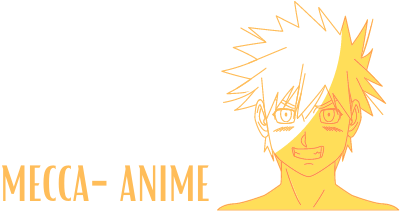Anime villains have left an indelible mark on both their respective series and the gaming world. Characters like Sephiroth and Frieza not only captivate audiences with their complex motivations but also create memorable gaming experiences that resonate with players. This article ranks the most iconic anime villains in gaming history, exploring their influence and why they have become unforgettable figures in the landscape of video games.
From the depths of dark power to the intricate schemes that drive their narratives, these villains often serve as the primary antagonists who challenge heroes to grow. Through their striking designs and memorable backstories, they elevate the stories in which they participate. Readers will discover which characters have made the most significant impact on gaming and why their legacies endure.
As players navigate through worlds filled with conflict, these anime villains stand out not just as obstacles but as essential elements of storytelling. Their roles shape the player’s journey and emotional investment, making the exploration of these characters both intriguing and worthwhile.
Defining Anime Villains in Gaming
Anime villains bring a unique flair to gaming, often characterized by their complex motivations and striking designs. Their influence on narrative and gameplay is significant, shaping player experiences and enriching storylines.
What Makes an Anime Villain Iconic?
Iconic anime villains often possess distinct traits that set them apart. These include compelling backstories, impressive abilities, and memorable catchphrases. A villain like Sephiroth from Final Fantasy VII stands out due to his tragic origins and iconic swordplay.
The visual design also plays a critical role. Characters such as Frieza from Dragon Ball Z are instantly recognizable, thanks to their unique styles and vibrant color palettes. Their presence often elevates conflict within games, providing players with unforgettable adversaries.
Anime villains frequently exhibit motivations rooted in revenge, power, or chaos, making them relatable yet formidable. This complexity is essential for creating engaging gameplay experiences that resonate with players.
Anime Inspiration in Game Design
Many game developers draw inspiration from anime when crafting villains. The blend of art styles and story arcs enriches the gaming landscape. Characters like Kefka from Final Fantasy VI illustrate how blending madness and charisma can create unforgettable personas.
Animation techniques utilized in anime influence cutscenes and character animations in games. The expressiveness of characters directly correlates with players’ emotional investment. Developers often incorporate dramatic moments, much like climactic anime showdowns.
Furthermore, game mechanics may reflect anime tropes, such as power scaling or transformation sequences. These elements enhance player engagement, allowing for deeper immersion in the storyline. Following notable trends in anime can lead to innovative gameplay design choices.
Ranking the Most Iconic Anime Villains in Gaming History
Anime villains have made a significant impact on gaming, bringing distinct personalities and complex stories. These characters often embody traits that resonate with players, making them memorable across various gaming platforms.
Legendary Anime Antagonists in Games
Among the most notable anime villains in gaming is Uzumaki from the Naruto series. His cunning strategies and ability to manipulate his environment create memorable confrontations. Another classic example is Vampire Hunter D, whose brooding presence and tragic backstory enrich gameplay in titles inspired by the anime.
Goku, though typically a hero, has faced villainous roles in specific games, showcasing his versatility. Games like Dragon Ball Z: Kakarot allow players to experience his darker conflicts. The character depth and development in these villains often drive the game’s narrative, making them essential for player engagement.
Cross-Platform Villains: PlayStation, Xbox, Nintendo
Different platforms have showcased iconic anime villains. On PlayStation, titles like Final Fantasy VII prominently feature Sephiroth, known for his fatalistic ambition and memorable theme music. His presence in the game has cemented him as an icon.
Xbox has featured villains like Ryuji from Persona 5, aligning with action-oriented gameplay while maintaining ties to its anime roots. Nintendo’s Zelda: Tears of the Kingdom innovates by incorporating anti-heroes. These villains, regardless of platform, highlight how anime influences game design and storytelling.
Influence on Modern Franchises
The legacy of anime villains extends to modern franchises such as Baldur’s Gate 3 and Kingdom Come: Deliverance 2. These games frequently draw inspiration from anime storytelling, creating multi-dimensional characters that engage players on emotional levels.
Games like Honkai: Star Rail illustrate the influence of anime narratives, featuring complex antagonists that enhance gameplay dynamics. The infusion of anime villain archetypes has redefined modern gaming, making them integral to the genre’s evolution.
Impact of Anime Villains on Gaming Culture
Anime villains have significantly shaped gaming culture, influencing everything from player engagement to storytelling techniques. Their memorable designs and complex motivations resonate with players, fostering discussions and fan communities.
Fan Reactions and Community Discussions
Character-driven stories featuring anime villains often ignite passionate discussions within gaming communities. Fans frequently analyze character arcs, motivations, and their impact on gameplay experiences. Platforms like Yahoo and Game Rant provide forums for sharing theories and debates about these antagonists.
Social media also plays a crucial role in amplifying these discussions. Hashtags related to iconic villains trend during game releases, showcasing the excitement and anticipation surrounding these characters. Players often create fan art and fan fiction, further contributing to the dialogue and solidifying the villains’ places in gaming lore.
Villains in Game Reviews and Media
Game reviews consistently highlight anime villains’ roles in enhancing narratives. Publications such as Game News frequently cite strong antagonists as key factors in a game’s success or failure. Critics assess not just gameplay mechanics but also how well a villain is crafted and integrated into the story.
The presence of iconic villains can elevate a game’s perceived quality, as seen in reviews that commend character depth. Action-oriented titles often leverage these villains to create memorable confrontations, drawing players in with high-stakes storytelling. Such evaluations reinforce the essential role anime villains play in both game design and player engagement.
